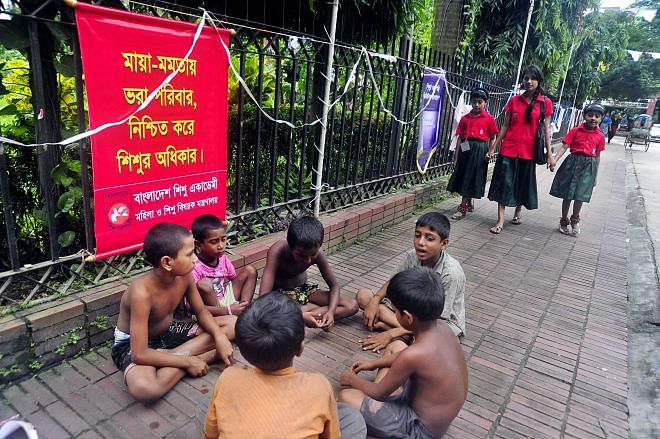Evidence for action: Making invisible children visible through data
Evidence for action: Making invisible children visible through data

THE world made a set of promises to children 25 years ago when it adopted the Convention on the Rights of the Child.
We promised every girl and boy the right to survive and be healthy. We promised every child the right to an education, to a name and to an identity. We promised that no child should be subjected to violence.
Have we kept those promises? The only way to know is to use data to see how far we have come, and where we still need to go. Data are more than just numbers -- they represent the reality of life for children around the world.
For example, data show us that fewer children now die before their fifth birthdays and more girls are in school than ever before. While this is good news, data also reveal that even in countries where progress is being made, far too many children are left behind. This marginalisation is often hidden by statistical averages, which show overall improvement but mask disparities within nations. Children left behind become 'invisible.'
In Bangladesh, significant progress has been made in increasing primary school enrollment and ensuring gender parity in schools. Immunisation services in Bangladesh routinely reach the majority of children. Yet, even for very successful programmes such as these, what might at first look like a small percentage of children being missed out may actually hide a large number of children who are left behind. For example, the 14% of Bangladeshi children aged 12-23 months who are not fully vaccinated translates into about 370,000 children remaining vulnerable to deadly yet easily preventable diseases such as measles, tuberculosis and tetanus. Children not reached by immunisation services are predominantly found among the poorest and hard-to-reach communities.
Bangladesh has made significant progress by curbing the under-five mortality rate to 41 per thousand live births. However, nine neonates still die every hour, which is 76,000 neonatal deaths every year. The neonatal mortality rate has not decreased substantially for the past 10 years. Mortality among children in the poorest households and those in hard-to-reach areas is at least 50% higher than those in the wealthiest areas.
While Bangladesh has made significant progress in primary education for both boys and girls during the last two decades, still almost 25% of children aged six to 10 years are out of school. Even in the best performing upazilas, 13 out of 100 children are out of school. One upazila has 45 out of 100 children out of school, a distressing number that calls for appropriate policy review and action.
Globally, the births of nearly 230 million children under five have never been registered and the denial of an identity deprives them of services and protections that are theirs by right. Bangladesh is among the 10 countries with the largest numbers of unregistered under five children in the world. Some 10 million children under five in Bangladesh do not officially exist.
UNICEF's new report, State of the World's Children 2014 in Numbers: Every Child Counts - Revealing disparities, advancing children's rights, exposes some striking inequities. The world's poorest children, for example, are nearly three times less likely than the richest to have a skilled attendant at their birth.
Revealing these disparities allows us to understand the barriers that children confront in accessing and using essential services, and design and monitor initiatives that make it possible to overcome them. Data alone do not change the world, but they make change possible by providing evidence to drive action, identify gaps, influence decision-makers, and target investment and intervention to reach the most vulnerable children.
In Bangladesh, recent data collected in 19 of the most deprived unions have revealed important disparities in the availability, access, utilisation and quality of essential services for women and children. For example, household accessibility to safe water supply ranged from 38% to 99% between the least performing and the best performing upazillas.
Involvement of local stakeholders in the analysis of data and identification of the right corrective actions is proving essential, given their knowledge of local constraints and resources. For example, in one particularly deprived union, use of locally generated data has led, within one year, to a fourfold increase of the use of iron folic acid supplements by pregnant women.
Children and their communities can use data and mobile phone technologies to measure and report the extent to which national commitments are honoured in their homes, clinics, schools and streets.
Data are making visible the children at greatest risk -- those furthest from society's reach. It is up to decision-makers at all levels to make sure that those children -- and all children -- are granted the opportunity to fully enjoy their rights.
As we mark the 25th anniversary of the Convention on the Rights of the Child this year, Unicef challenges the world to use data and evidence to inspire creative thinking and find innovative solutions to the most pressing issues confronting children. This anniversary is an urgent reminder of the promises that have yet to be fulfilled -- promises that can mean a world of difference for children.
The writer is Representative, Unicef Bangladesh.